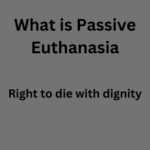ICMR issued revised Type 1 Diabetes guidelines: Basics Explained


The Indian Council of Medical Research (ICMR) has issued revised Type 1 Diabetes guidelines. India has become the world’s second-largest adult population of this disease. Every 6th person who has diabetes in the world is an Indian;the number of diabetics has increased by 150% in the last three decades. In addition, the increasing prevalence of pre-diabetes indicates a further increase in diabetes shortly; has got all the income groups including middle, upper, and even the deprived provinces of the community. More than one million children and adolescents have type 1 diabetes. Current assessments by the International Diabetes Federation indicate that India has the highest cases of type 1 diabetes.
Diabetes is a long-term illness that affects the way your body converts food into energy. The majority of the food you eat is converted to sugar (also known as glucose) and absorbed into your bloodstream. When your blood sugar levels rise, your pancreas is prompted to release insulin. Insulin is a key that allows blood sugar to enter your body’s cells and be used as energy. There are two types of diabetes prominent in people, including type 1 diabetes and type 2 diabetes.
To manage Type 1 Diabetes, the ICMR recommends eating a nutritious diet. Carbohydrates should account for 50-55 percent of total calories. Fats should account for up to 30% of total calories consumed on a daily basis. Protein should account for 15-20% of total calorie consumption. Salt intake should be reduced to 2.5 g per day for children aged one to three, 3 g per day for children aged four to eight, 3.8 g per day for children and adolescents aged 9 years and above, and 6 g per day for adults. Processed foods are high in salt, so they should be consumed in moderation.
Regular physical activity improves overall well-being, prevents obesity, and lowers cardiovascular risk in Type 1 Diabetes patients.
Both the physician and the patient should inspect injection sites on a regular basis, especially if there is unexplained blood glucose variability. One of the negative effects is insulin site infection.
For young children, especially those with poor glycemic control, the frequency of daily Self-Monitoring of Blood Glucose (SMBG) might range from four to six times per day. In youngsters with improved glycemic control, a more liberal SMBG of two-three times per day may be recommended. Testing could be limited to sick days and hypoglycaemic episodes, with a “basic minimum” of two to four times per day for two to three consecutive days per month.
Diabetic ketoacidosis (DKA), in Type 1 patients, develops; Nausea and vomiting, abdominal pain, acidotic breathing, and indicators of dehydration arise. Better access to medical treatment, and adequate patient education, can all help to prevent DKA.
Diabetic retinopathy is a primary cause of blindness in adults and one of the most common microvascular complications of type 1 diabetes. It is a degenerative illness that, if left untreated, can result in significant vision loss
Diabetic nephropathy (DKD) is the leading cause of chronic kidney disease (CKD) in India and around the world. In recent decades, early diagnosis combined with effective glucose control and blood pressure management has improved the prognosis of these patients.
In people with type 1 diabetes, neuropathy is a common microvascular consequence.; single most critical determinant in the development of foot ulcers and lower-extremity amputations.
Type 1 diabetics have a higher risk of morbidity and mortality from cardiovascular disease than the general population. This includes coronary artery disease, stroke, and peripheral arterial disease. Type 1 diabetic patients experience cardiovascular events earlier than the general population.




0 Comments